I Went to the World's Most Prestigious Art Fair — These Are the 7 Booths I Can't Stop Thinking About Now I'm Back Home
Art Basel 2025 captured a riveting portrait of contemporary self-expression. But who knew it would show us other ways of understanding and engaging with the spaces we inhabit, too?

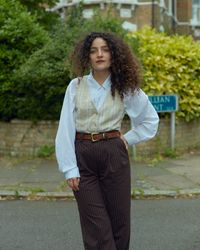
"Gosh, can Switzerland be hot," must have been my most immediate reaction as I laid foot on the roasting asphalt of Basel, the country's buzzy creative capital, for the very first time last Tuesday at noon. Heading to the preview days of the latest edition of the world's foremost art fair, Art Basel 2025 (June 17-18, open June 19-22), one of the most anticipated appointments on the agenda of globetrotting collectors, gallerists, and fine arts practitioners alike, and an unmissable mingling opportunity for all-round bon vivants, it was impossible not to immediately start noticing all the little details that make the nation a bucket list destination across the globe.
The grass might not always be greener on the other side, but trust me, despite the heat, it certainly is in this quaint, postcard-like northwestern slice of Switzerland. From locals letting the Rhine River guide them back home after a long day at work, floating peacefully down the balmy basin in swimwear with their belongings safely stored in a waterproof bag for a stress-free commute, to the countless, panoramic al fresco dining spots for savoring food, drinks, and great company late into the night, and the just as many architectural marvels, museums, and design showrooms to discover along the way, it takes less than a few hours to feel like you'd be better off living there — a couple of minutes when the sun hits its fascinating blend of Romanesque, Gothic, and Baroque mixed uber-modernist buildings, casting choreographic shadows all over the pavement.
The city's magic, though, as Egyptian-born multidisciplinary artist and adopted Baseler Basim Magdy pointed out while walking me around his booth at the fair, waxes, wanes, and even has a name: Art Basel. Marking the return of one of the most exciting cultural events of the year, the 55th iteration of the influential showcase brought together 289 industry-leading galleries from 42 countries, including 20 newcomers hailing from all over Europe, Asia, and the Americas. Led by Director Maike Cruse, Art Basel 2025 took over the aluminum-clad, futuristic halls of the Herzog & de Meuron-designed Messeplatz exhibition center in one of its most diverse and successful editions yet.
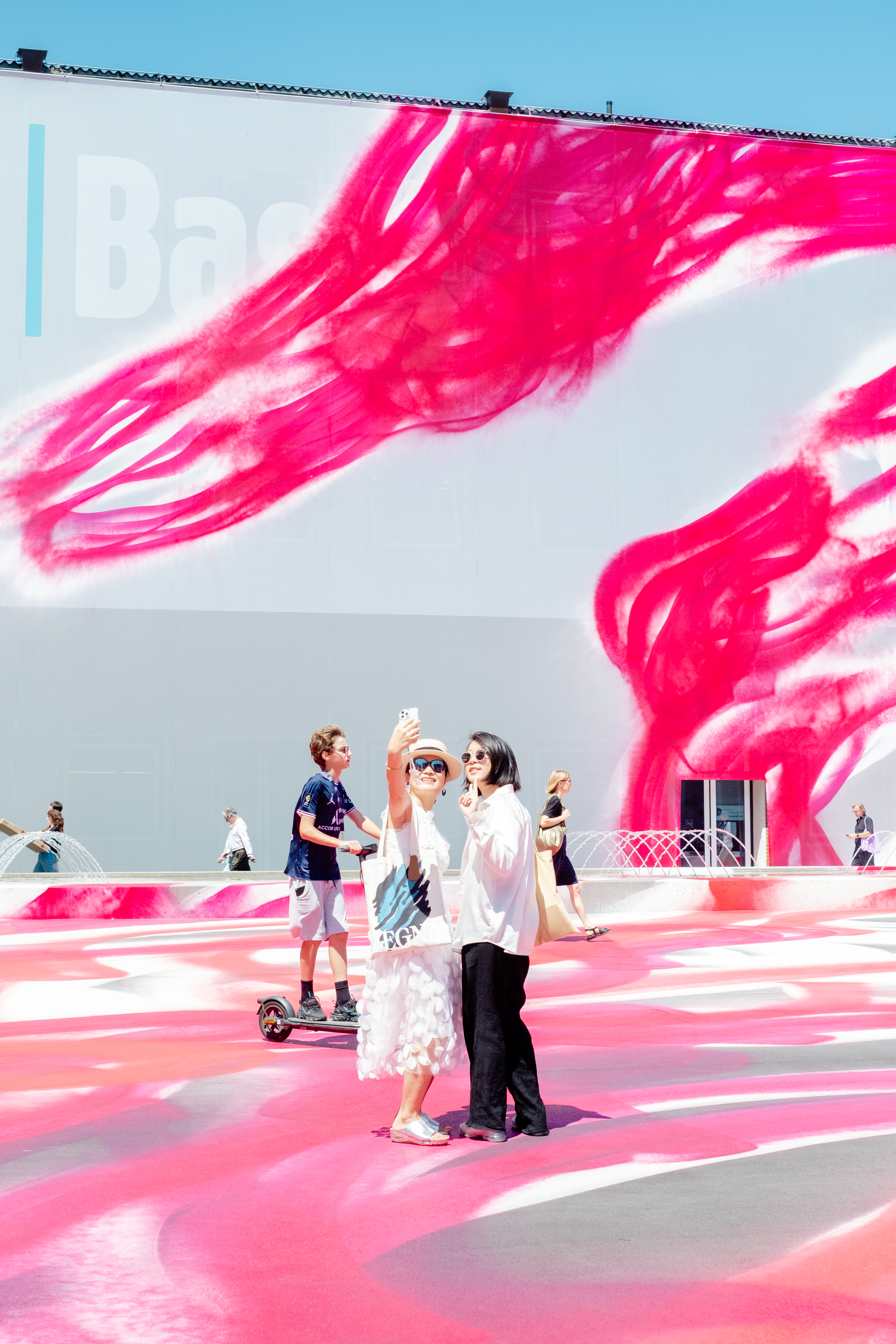

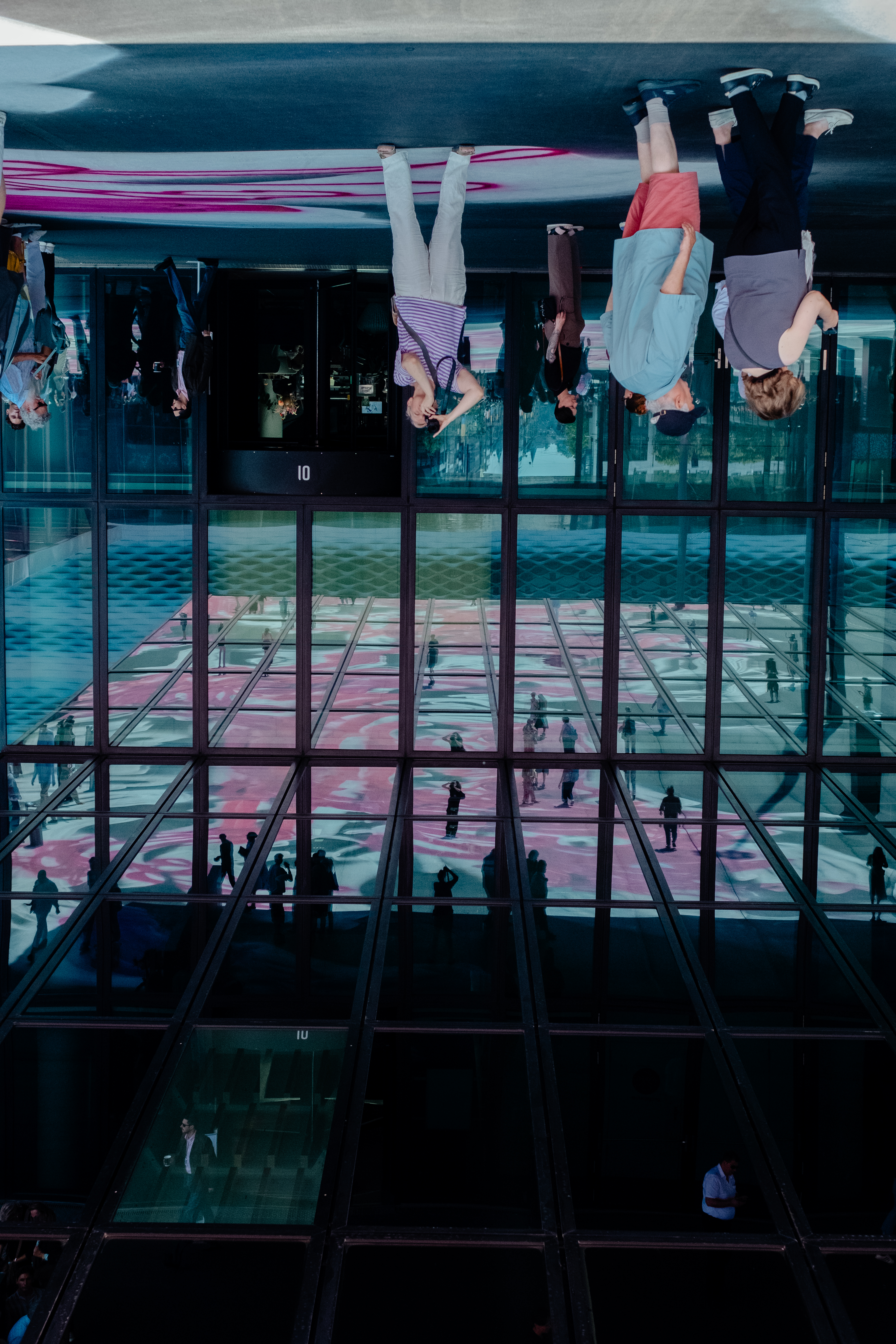
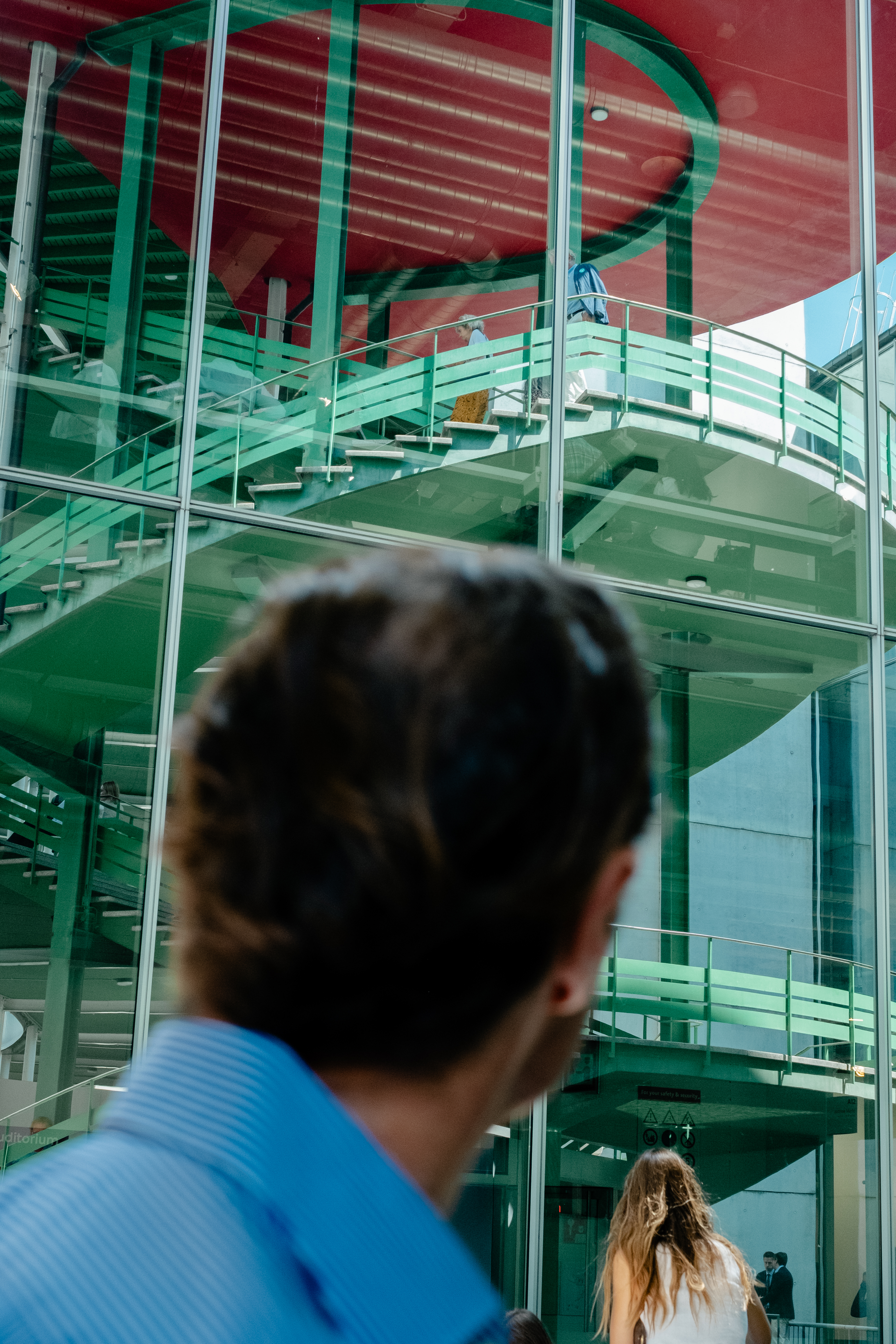
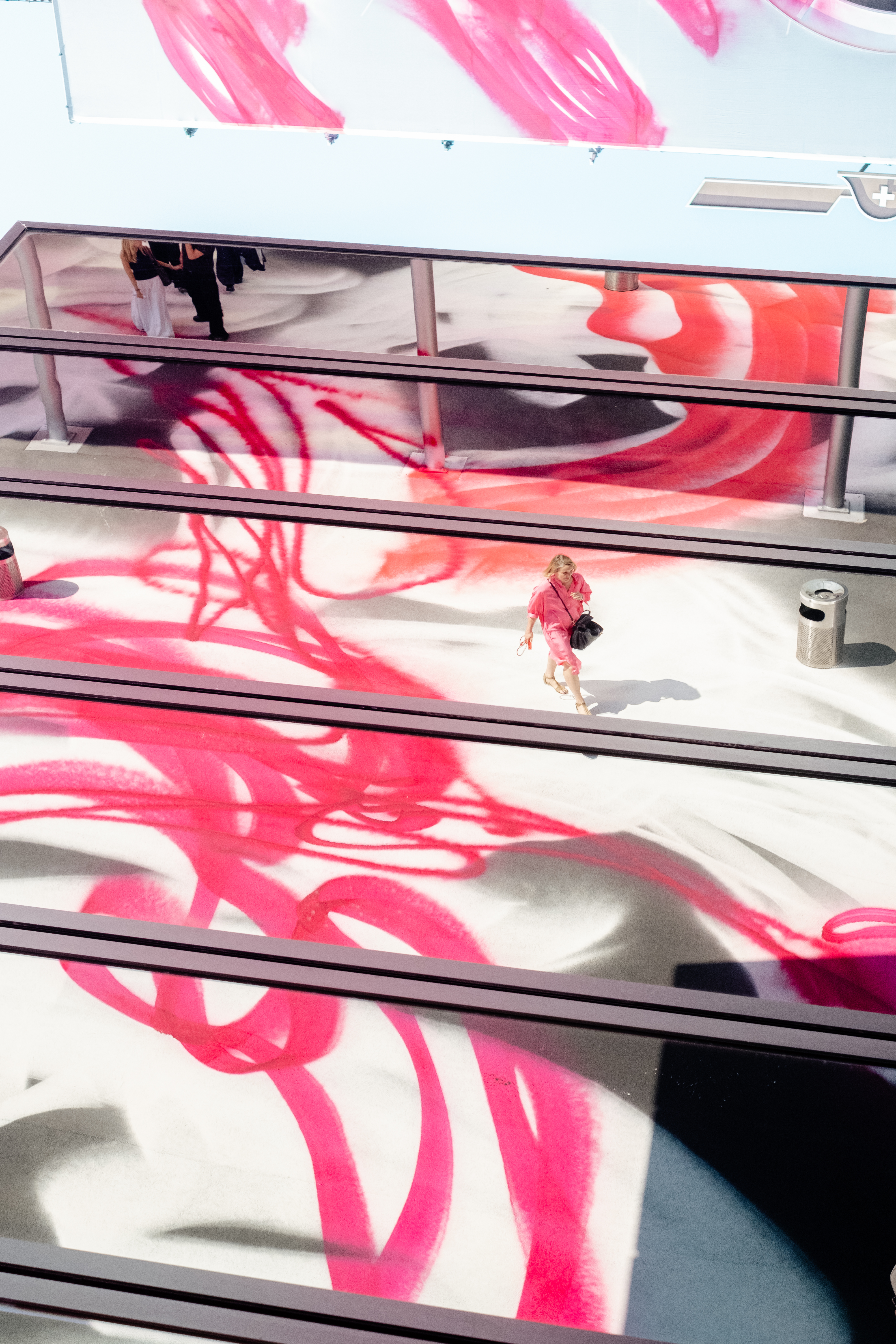
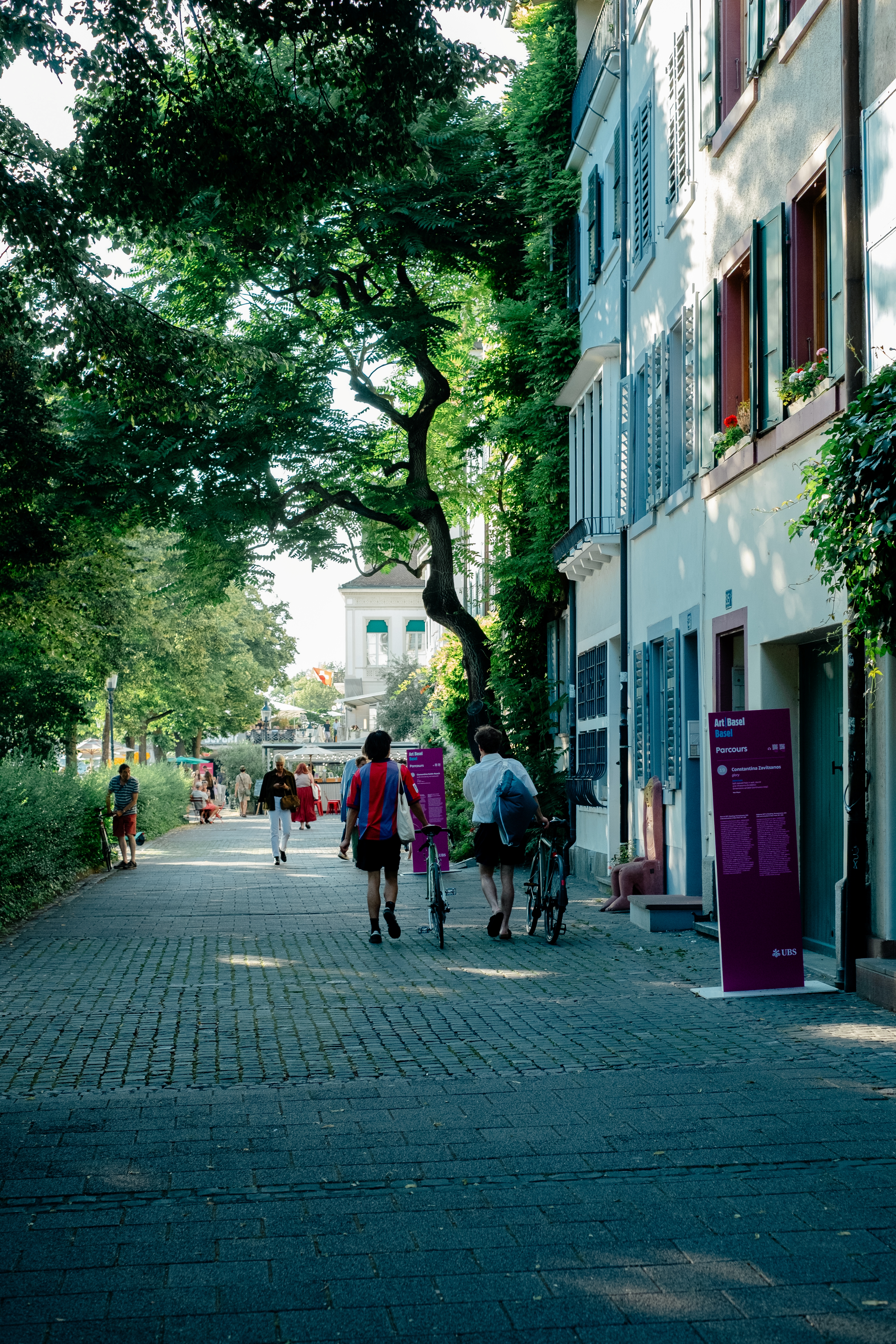
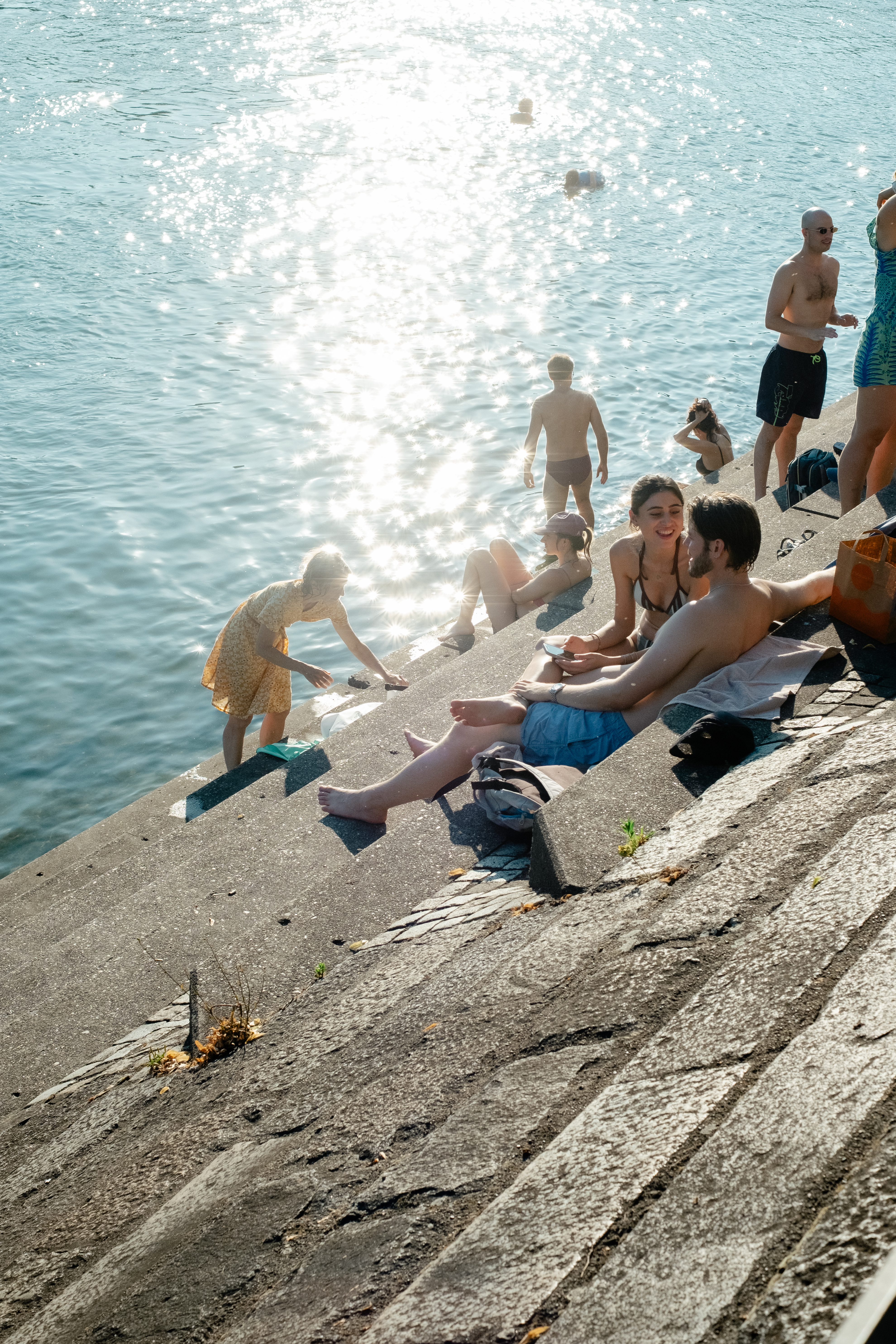
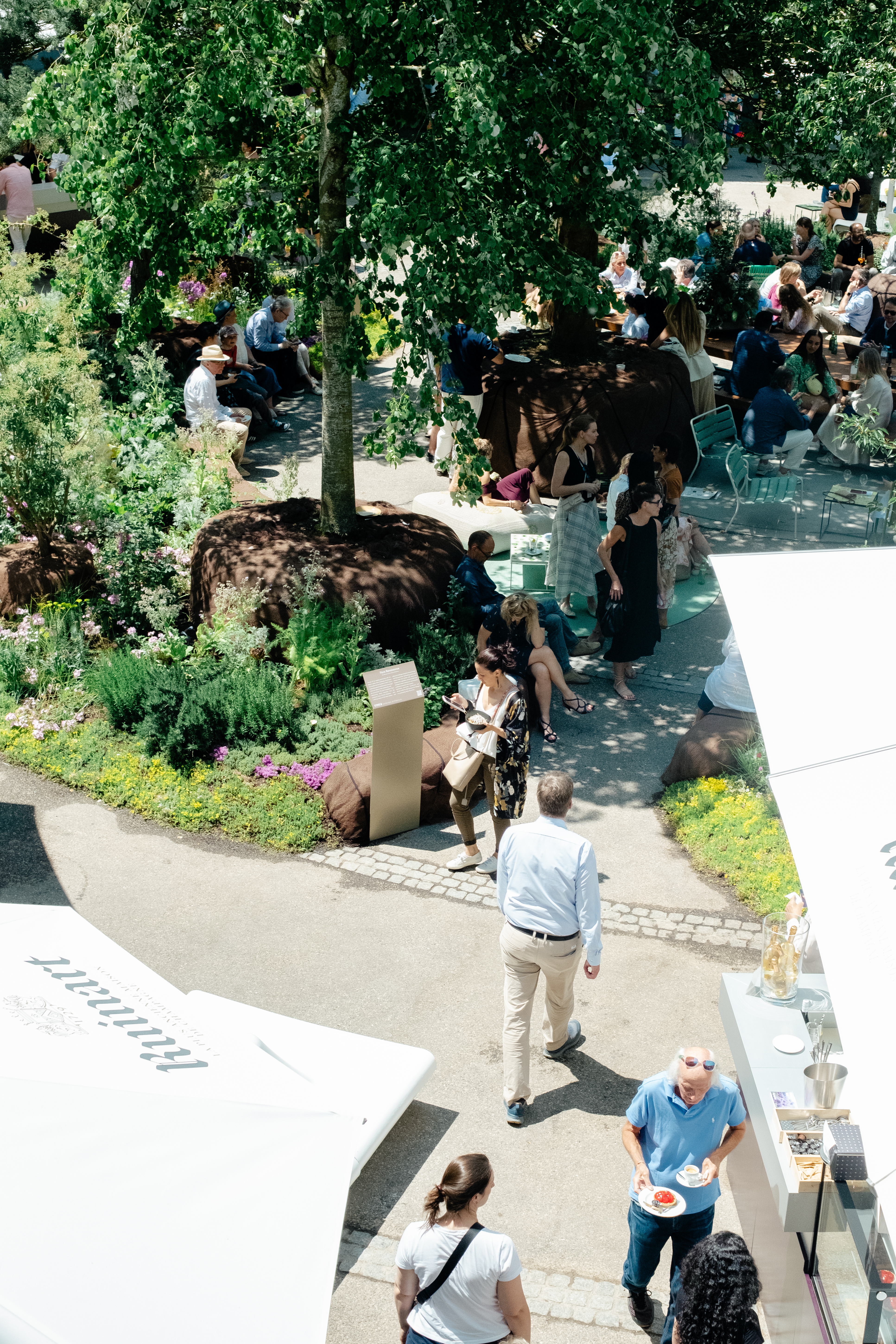
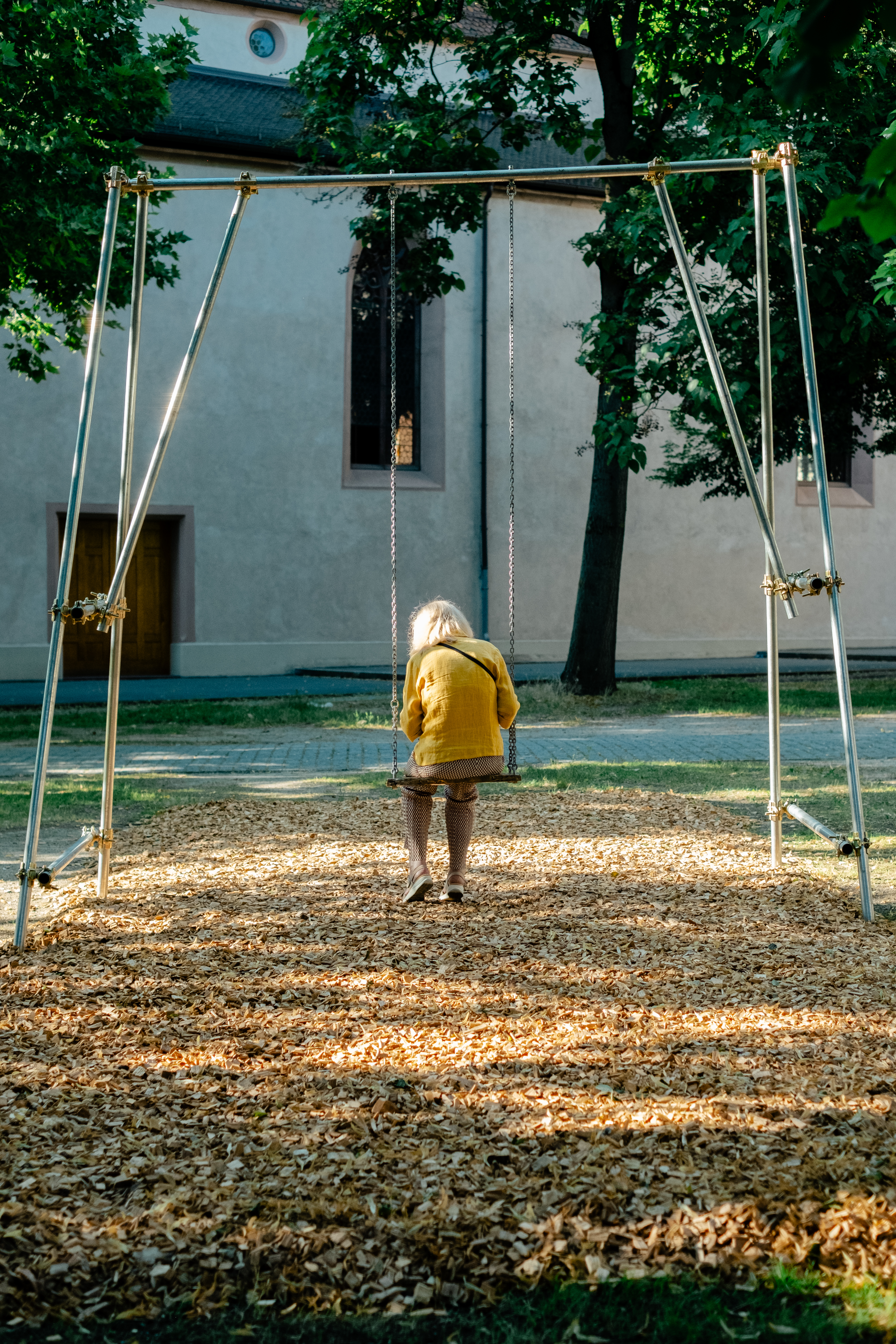

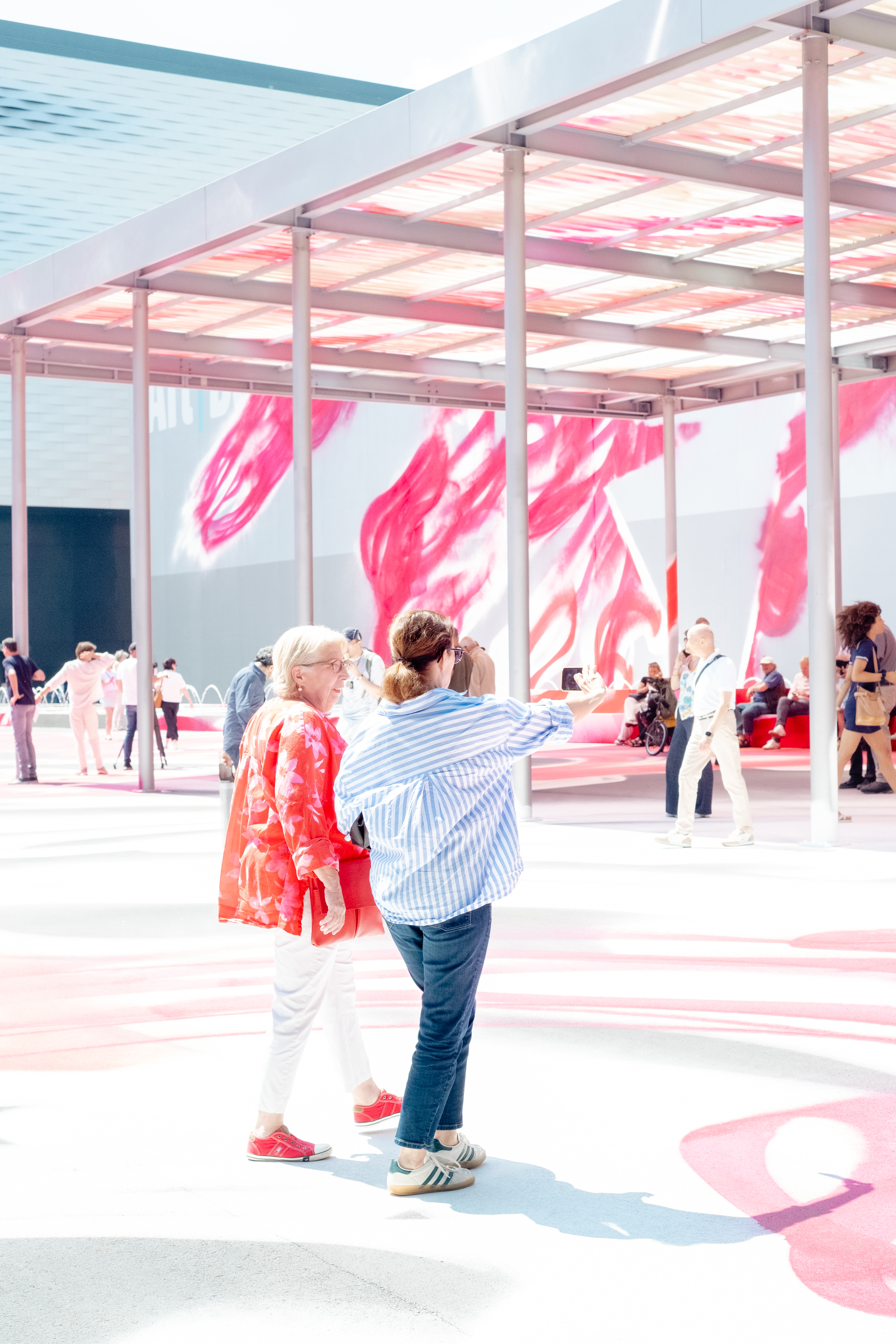
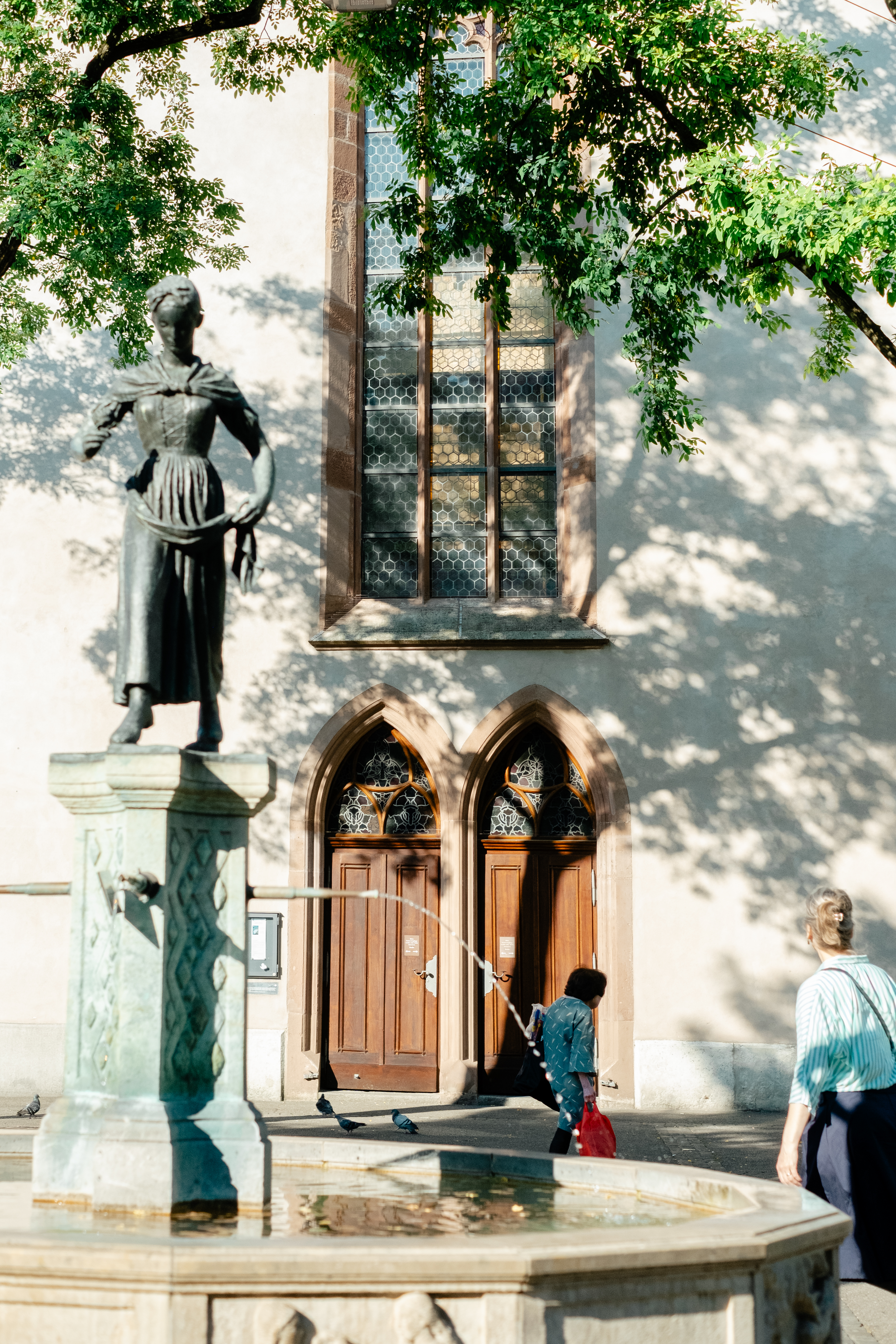
Strong sales aside, what made the presentation worthwhile was the debut of its Premiere sector, platforming innovative artworks realized by contemporary artists over the past five years, Katharina Grosse's site-specific, spray-painted reinvention of the hosting institution, which transformed its Hall 2's exterior into a dynamic, electric pink maze, and the hidden trails of artistic expression unleashed by Stefanie Hessler's curated public art program for the fair, Parcours, whose bold installations, scattered along the animated Clarastrasse and the adjacent riverbank, probed the continuum between the natural and the manufactured, history and technology, the human and the transcendental in response to the theme Second Nature. What stayed with me most from Art Basel 2025, though, are the seven powerful explorations of home, personal identity, and collective memory outlined below.
Hall 1
Michelangelo Pistoletto at Galleria Continua
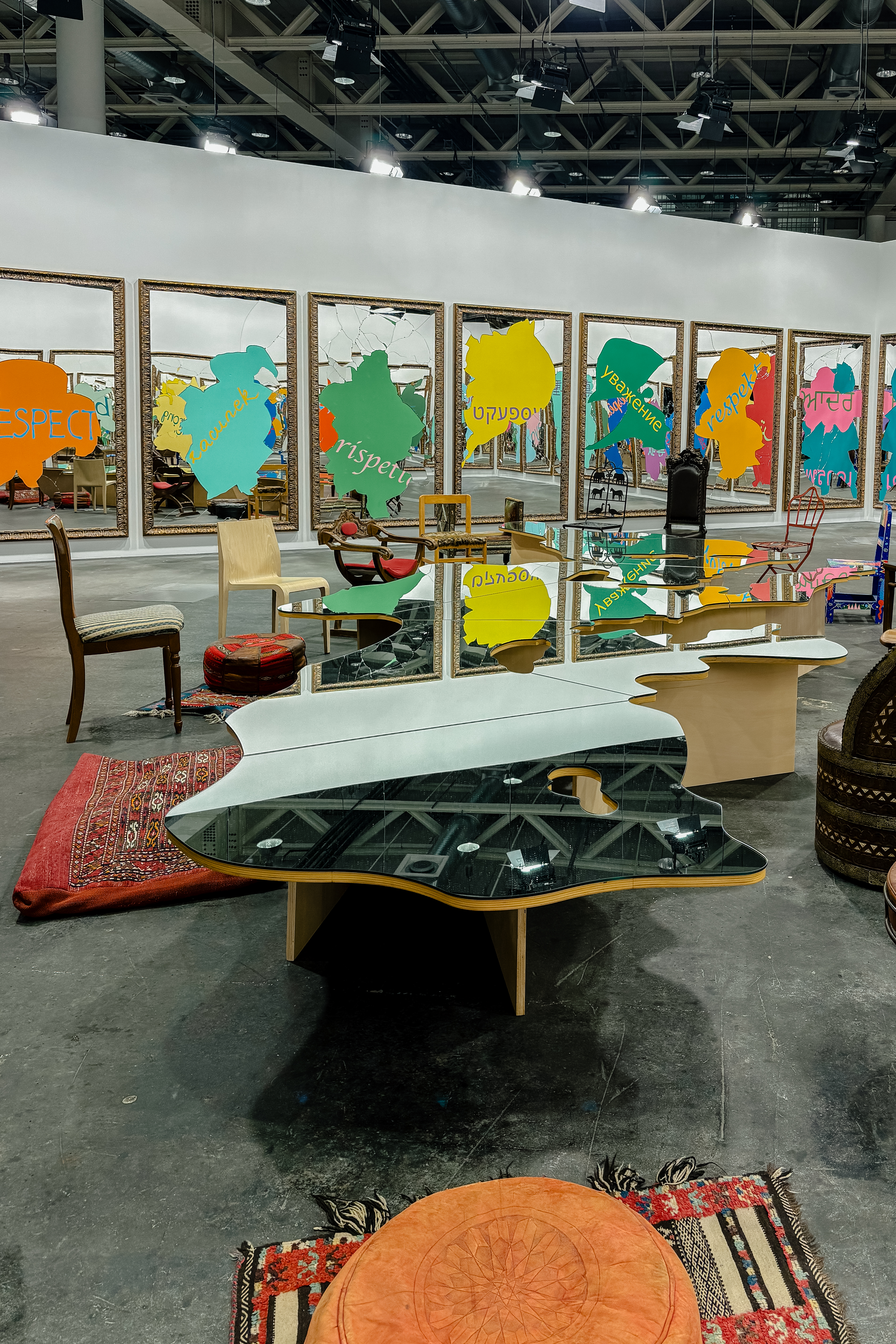
Arte Povera pioneer Michelangelo Pistoletto's contribution to Art Basel 2025's Unlimited section looked to domesticity as a space for intercultural dialogue, reciprocal respect, and community.
At Art Basel 2025, legendary Italian painter, action and object artist Michelangelo Pistoletto presented visitors with Rispetto, a kaleidoscopic living room space expanding around a central mirrored table modeled after the unruly silhouette of the Mediterranean sea, encircled by a series of large, wood-framed mirrors. Like most of his production, which unfolds at the intersection of art and everyday life, this piece, too, relates to the current state of affairs by symbolically putting the epicenter of the ongoing European refugee crisis and the theater of wider sociopolitical struggles at its heart.
Fusing the concept behind two of Pistoletto's previous works — namely the Third Paradise (2003), which invoked collective engagement and personal responsibility in support of the planet and "the human society inhabiting it", and Love Difference (2003), the table serving as the core of this installation, decorated with chairs sourced from the countries overlooking the Mediterranean to hint at the urge for transnational dialogue — Rispetto aimed to "create a lasting space for conversation, turning rupture into an invitation to embrace difference as the basis for understanding". The mesmerizing domestic setting, part of Art Basel 2025's most spectacular section, Unlimited, which featured 68 monumental works, and platformed by Galleria Continua, allowed visitors to take up a hammer and smash the mirror panels all around them first-hand. In doing so, people revealed the striking background contained by them, each reading "respect" in a different language and embodying an opportunity for catharsis, empathy, and reciprocal understanding.
Basim Magdy at the Samsung ArtCube Lounge
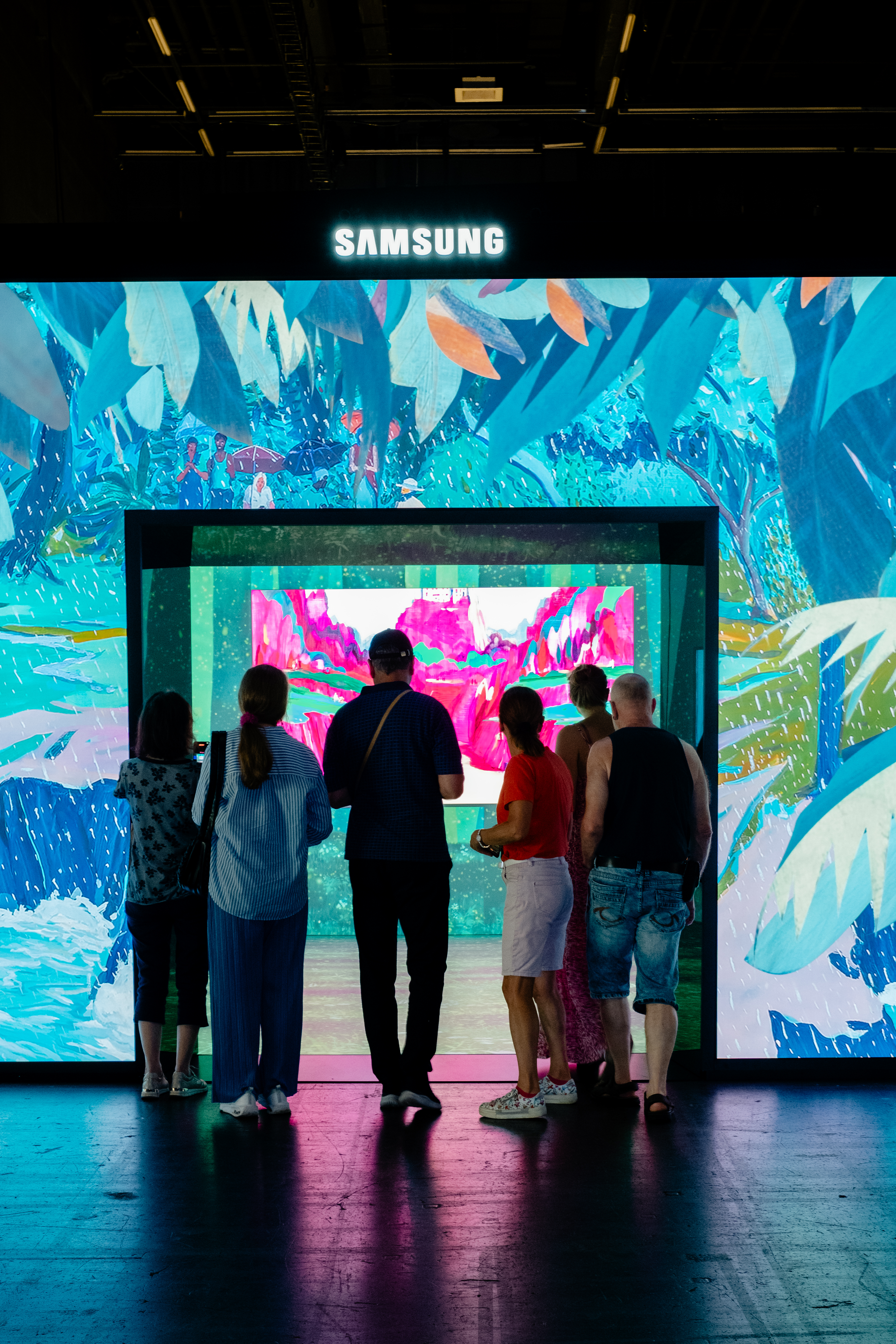
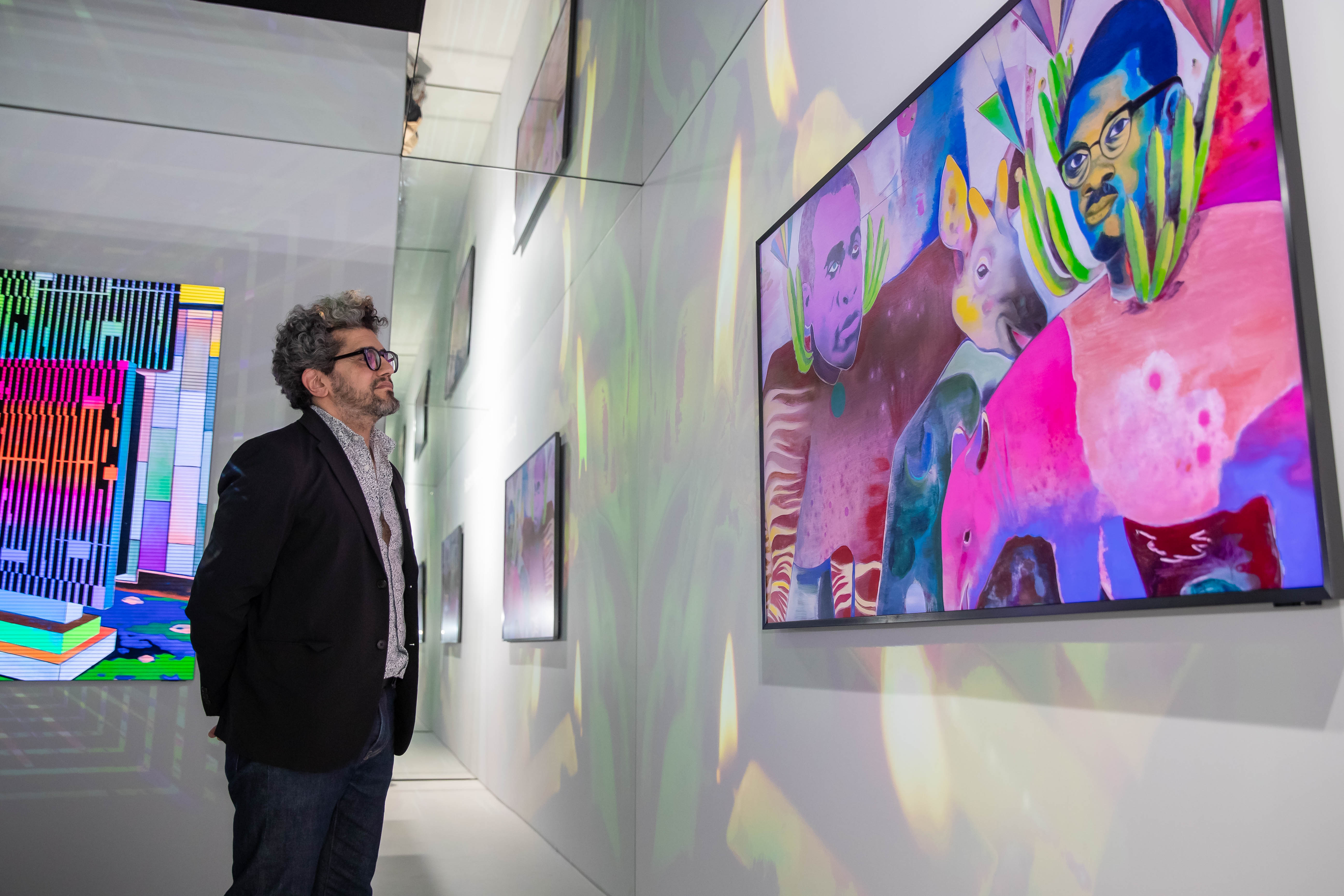
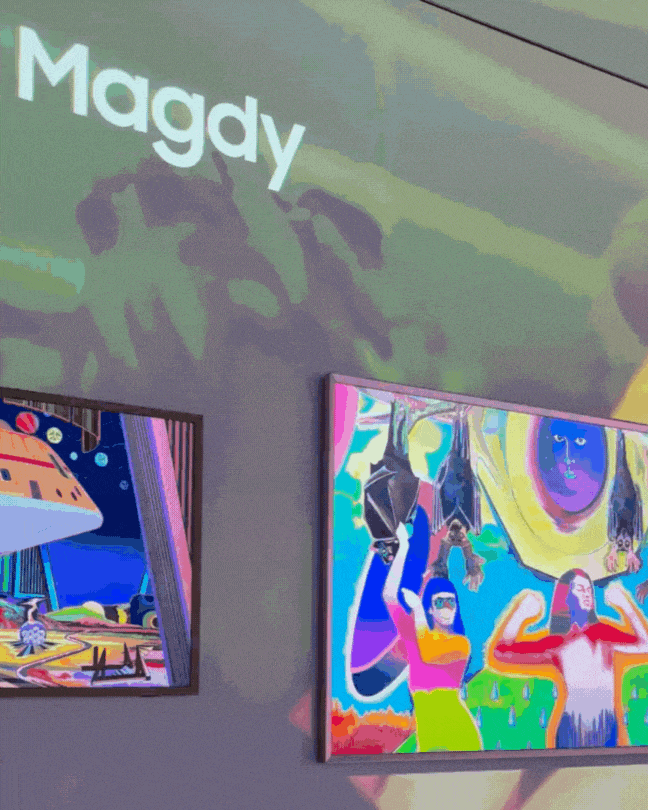
When a few of weeks ago I received an email from Samsung asking me to join the brand on a press trip to Art Basel 2025 to celebrate its latest collaboration with the event, I was as surprised as you likely are right now to find out that the electronics pioneers have now got a foot in the art scene, too. Still, the prospect of flying to Switzerland to check out their interactive Samsung ArtCube, powered by the South Korean house's cutting-edge Art TVs, including the AI-optimized Frame, MICRO LED, and Neo QLED 8K, and brought to life by an exciting curation of artworks, felt too good to miss out on, particularly for an arts-addicted lifestyle editor. Though I normally gravitate toward more analog creative expressions, I found the appeal of this walk-through, multisensory installation, which gathered bidimensional contributions from a cohort of established and rising talents along with captivating animations, undeniable.
For screen geeks, the Samsung ArtCube, whose 38-piece painting collection marked the biggest collaboration between the tech manufacturer and the fair yet following its debut at Art Basel Miami Beach last year and its appearance at Art Basel Hong Kong 2025, served as an opportunity to observe these TVs' performance up close — and realize how close they get to reproducing the look and textural feel of authentic artworks. For me, though, the activation begged one question: how can technology (re-)shape our relationship with the art world?
As Samsung's European Product Manager, Sofia Monteiro, the curator of the brand's ever-evolving artwork selection, explained during a panel discussion that saw her share the spotlight with K-pop idol RM of BTS during the fair, "Samsung Art TVs have the power to bring the museum experience into the home." Working with leading art institutions and creatives from across the globe, every month she handpicks paintings and photographs to include in the Samsung Art Store, the digital archive enabling every Samsung Art TV owner to add an extra source of inspiration to their space's decor. Granting everyone access to bold contemporary works, the collection strives to demystify what has traditionally been an elitist industry, "extending the benefits of thought-provoking, uplifting creativity to all".
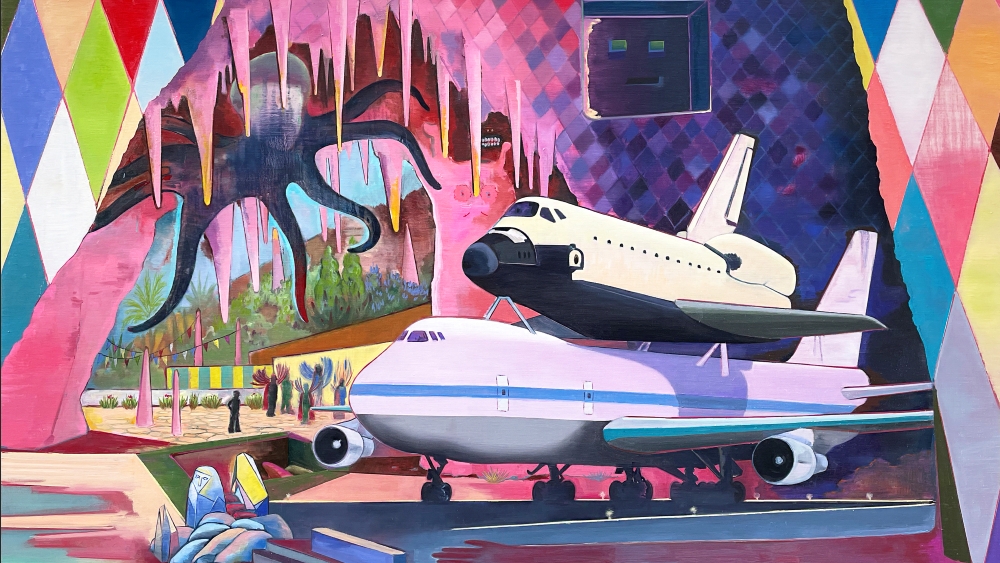
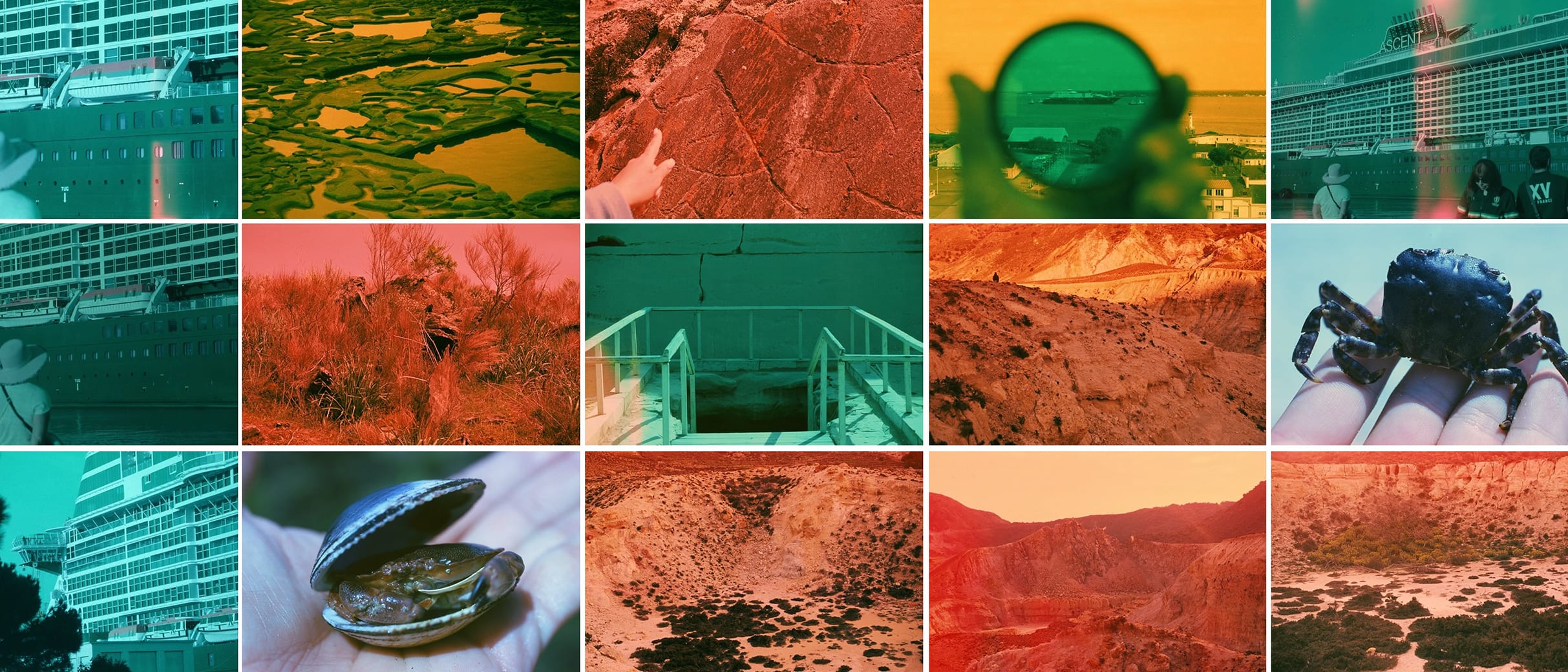
In return, the showcased artists get to witness their craft in ways they didn't even know were possible. "Being able to physically walk inside a space and simultaneously experience my work across multiple levels — a painting on top of a film, presented on an LED screen — is something I have never done with my art before," Basim Magdy, whose transportative canvases, photographs, and moving images incorporate nods to his Egyptian heritage, the natural and animal realm, and historical political references into technicolored, futuristic utopias suspended between memory and a dreamed-up reality, told me, referring to his experience of the interactive booth. His contribution to the Samsung ArtCube at Art Basel 2025, which alternated with works by Roméo Mivekannin, Zandile Tshabalala, and Antonia Kuo among others, came spontaneously after he was approached by the brand. To herald it was a short clip from one of the artist's films, used a suggestive background for his paintings in the installation. In it, a person's hands, wearing a robotic exoskeleton, moved poetically across the frame, infusing the room with the flickering glow of the candles attached to them, while in the foreground, Magdy's bright, sci-fiesque universes proceeded to tell a tale of their own.
Also platformed by Cairo-based Gypsum Gallery's two-person-show Premiere presentation, where the chemically altered polaroids of his Hungry Tourists Never Forget the Shores They Sent Postcards From (2025) series poignantly captured the emotional and physical aftermath of mass tourism alongside Swiss-Greek artist Dimitra Charamandas's painted investigation into natural landscapes as a site for "change, erosion, and regeneration", Magdy doesn't believe technology is here to replace traditional art, but to complement it and facilitate new ways forward. "It's a kind of experiment," he said of his participation in the Samsung ArtCube, adding that people's reaction to it might inform new projects in the future. Intrigued by its potential, "I took a leap of faith because, while it's important to preserve the integrity of the work, I felt open enough to try something — and that's what I think artists should do".
Hall 2 — Premiere and Statements
Alexandra Metcalf at Ginny on Frederick
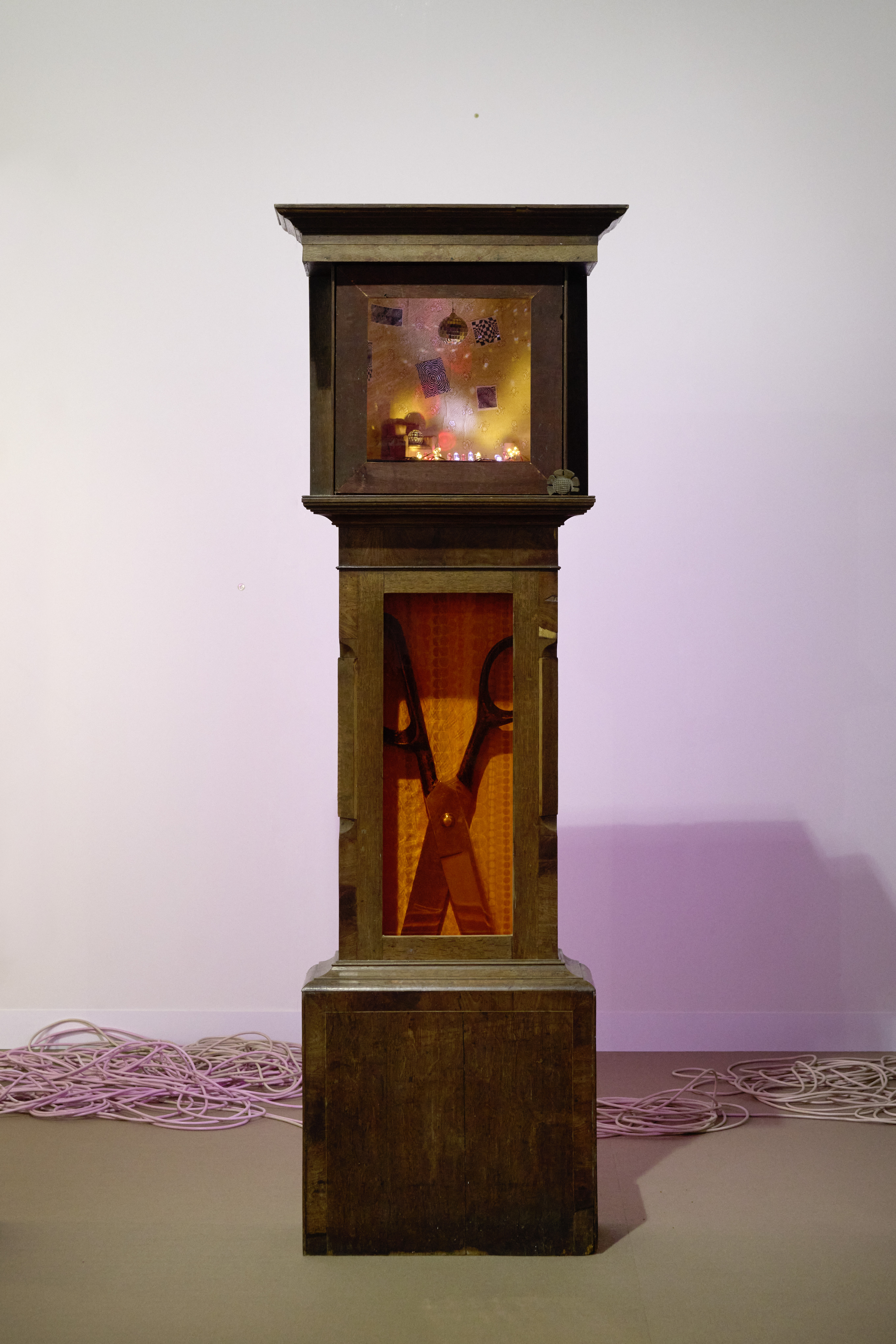


Ask me what exactly drove me toward British artist Alexandra Metcalf's solo presentation at Art Basel 2025, Assembly: Peter, Jackson, David, Frederick, and I'll know go straight to the point: it was the weirdly entrancing disco ball that, spinning around in the miniature living room she recreated inside the third of the antique grandfather clocks featured in her show with London gallery Ginny on Frederick, got me closer to it. Like the rest of her Statements installation, that specific detail bore a cinematic essence that broke the fourth wall, leaving passersby to wonder not just about the inspirations behind it — to me, it screamed Strangers Things, though I might be completely wrong — but also and especially about what convinced the artist to develop such meticulously crafted interiors within a space as constrained as that of former dials and clockworks. There was, in fact, more than Tim Burton-style, trippy aesthetics to Metcalf's latest creative offering, as also suggested by the male over-representation of its title, though the vertiginous, checkered yellow and black staircase of her left-hand-side clock would be enough to make this piece worthwhile.
A provocative look into the inner workings of women's "lives, choices, and physical realities", Assembly: Peter, Jackson, David, Frederick sought to denounce how these "have been regulated, medicalized, and silenced" against their own will. Exemplifying the contrast between "the entanglement of care and control" that, in the artist's view, determines the female world, objects like dioramas, oversized pins, glass, surgical tools, and fragments of domestic furniture were placed inside the bellies of the clocks. A metaphor for the invasive medical procedures women are often forced to undergo, these unassuming items also spoke to the structural institutional neglect they are exposed to while simultaneously playing on the "blurring of nurture with restraint" represented by the domestic sphere. In Metcalf's work, the home is rendered in all its ambivalence. To put it in her words, it is "a site of both violence and resistance, haunted by the legacy of decisions made about women, rather than with them".
Formafantasma and Alberto Garutti at Galleria Massimo Minini
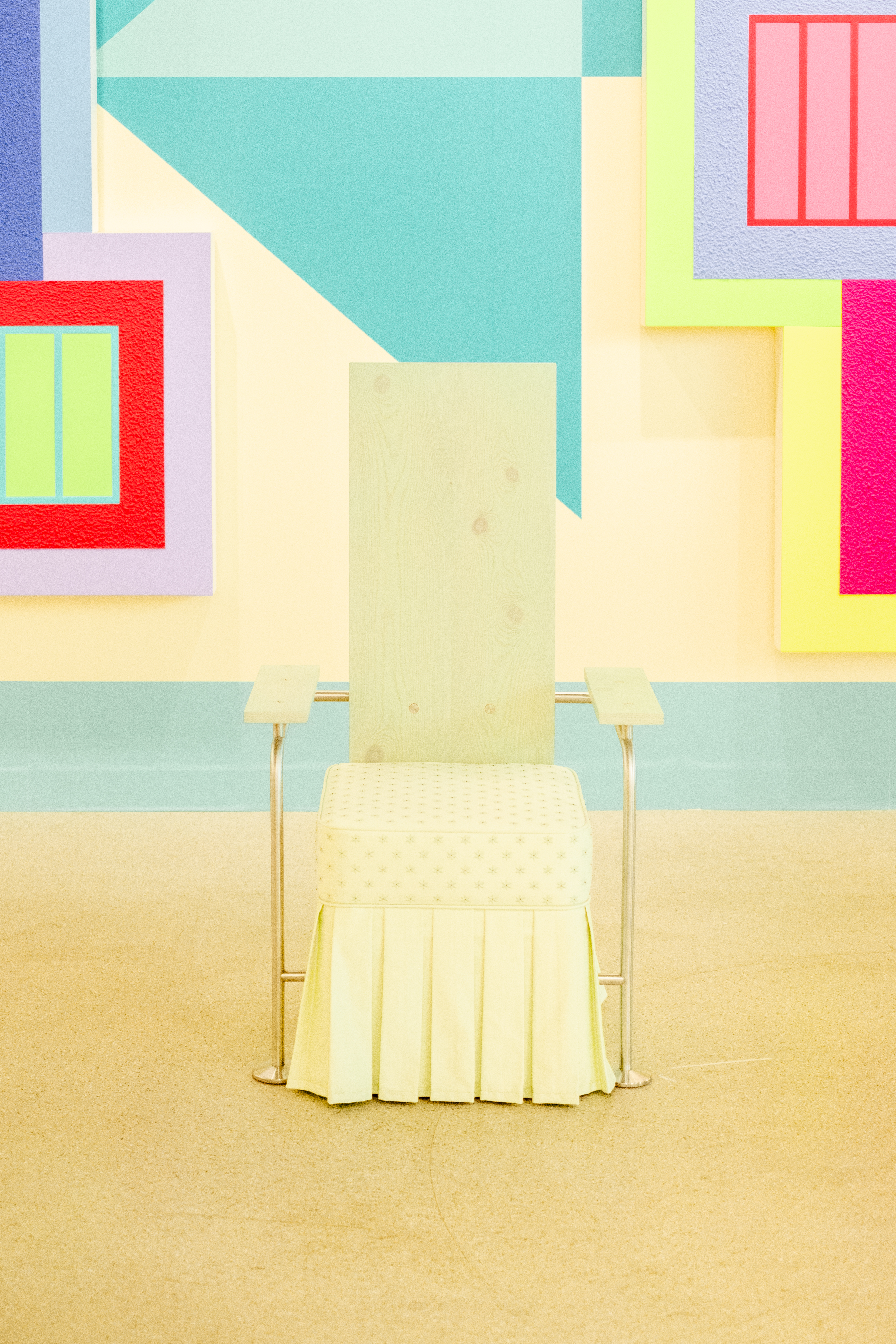

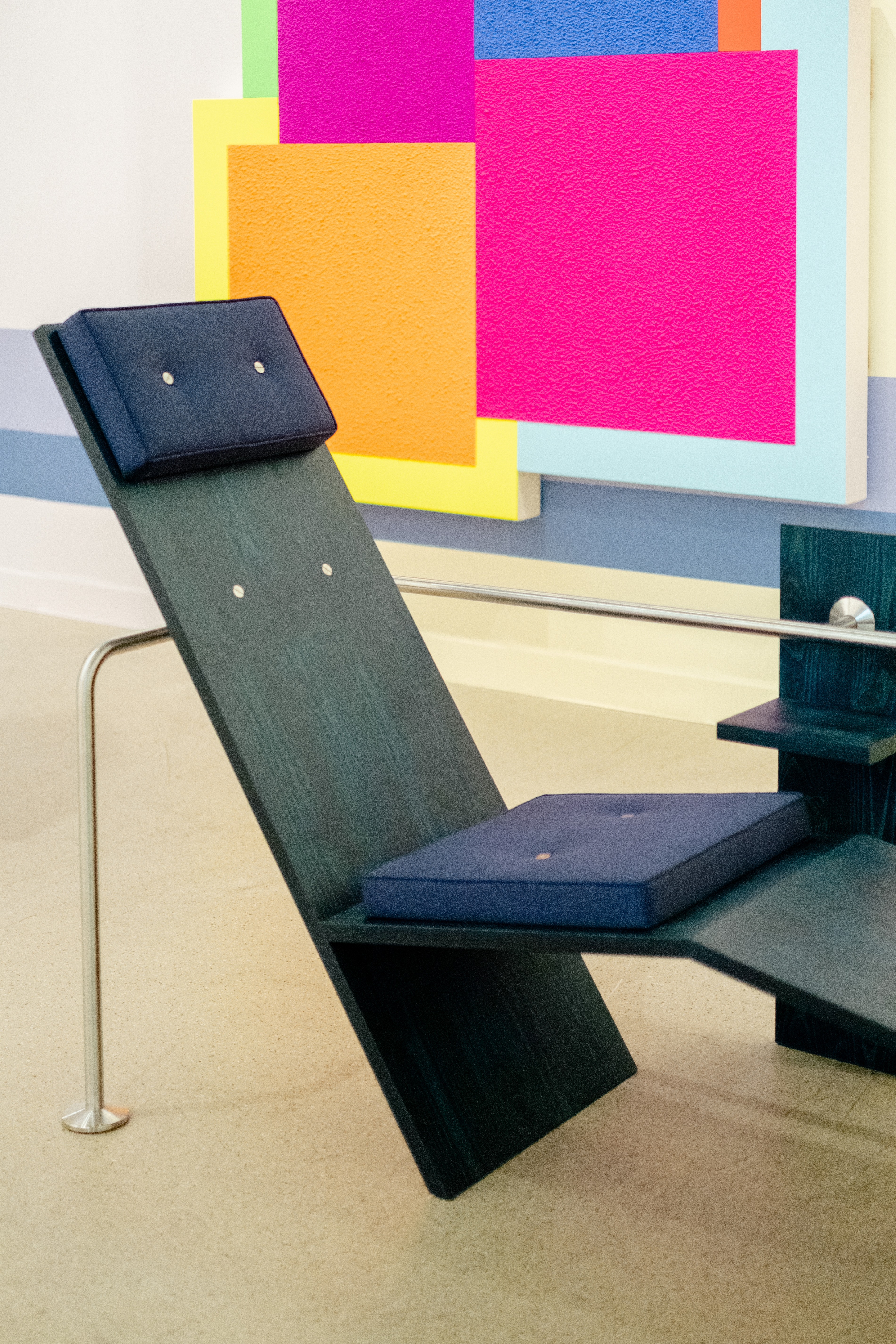
With hundreds of installations to interact with and draw inspiration from, events like Art Basel are, at their core, an endurance test for die-hard art and design enthusiasts. At least, they certainly are for me. Luckily, though, there are presentations that speak to you no matter how many paintings, colossal sculptures, and audiovisual setups you have been faced with up until that point. Whether because of its proximity to my home (I grew up only a dozen kilometers away from Brescia, where the platform has its base), or thanks to the instinctual sense of familiarity I immediately felt in engaging with its largely Italian cohort of spotlighted artists, Galleria Massimo Minini's booth at the fair was certainly one of them. A stunningly executed interdisciplinary exercise, the stand comprised expansive, pastel-shaded murals by Alessandro Mendini, which, conceived to expand on the geometric nature of Peter Halley's new, pop abstract paintings, lent themselves as the perfect backdrop against which more retro-fueled creations found their place.
Among all the personalities showcased by the gallery, including the likes of legendary Italian painter Carla Accardi, pioneering American textile artist Sheila Hicks, and visionary image-maker Jacopo Benassi, two practices stood out: that of intersectional culture and design think tank Formafantasma, the boundary-pushing duo formed by Andrea Trimarchi and Simone Farresin, known for their high-profile collaborations with lifestyle colossuses like Hermès and lighting pioneers like Flos, besides their recurring Prada activations during Milan Design Week, and the late Italian artist Alberto Garutti's, whose decades-long career examined the complex relationship between art creators and the spaces and viewers that experience their works.
It isn't a coincidence that both of their contributions to Galleria Massimo Minini's Art Basel 2025 participation took the emotional, lingering power of design to the fore. The Formafantasma's chair and chaise longue on display at the booth, part of the duo's La Casa Dentro ("The Home Inside") series, disrupted the hyper-precise, almost sterile canons of Modernism — which replaced ornamentation with function-driven simplicity via raw materials like steel, glass, and concrete — through romantic fabric insertions as well as handpainted floral motifs that revived the atmosphere of the designers' childhood home. Meanwhile, Garutti's What happens in rooms when the people have left? (2001-2023), a tidy selection of buttery furnishings, including chairs, tables, cupboards, and vases, stacked up on top of each other as if in a storage room, addressed the role that objects and domestic environments as a whole continuously play in our lives, even when unnoticed. Covered in a fluorescent coating, each of those pieces would come alight at night, when no one is there to witness them, in a poetic manifestation of the magic, sentimental warmth, and life trapped in the things around us.
Joyce Joumaa at Galerie Eli Kerr
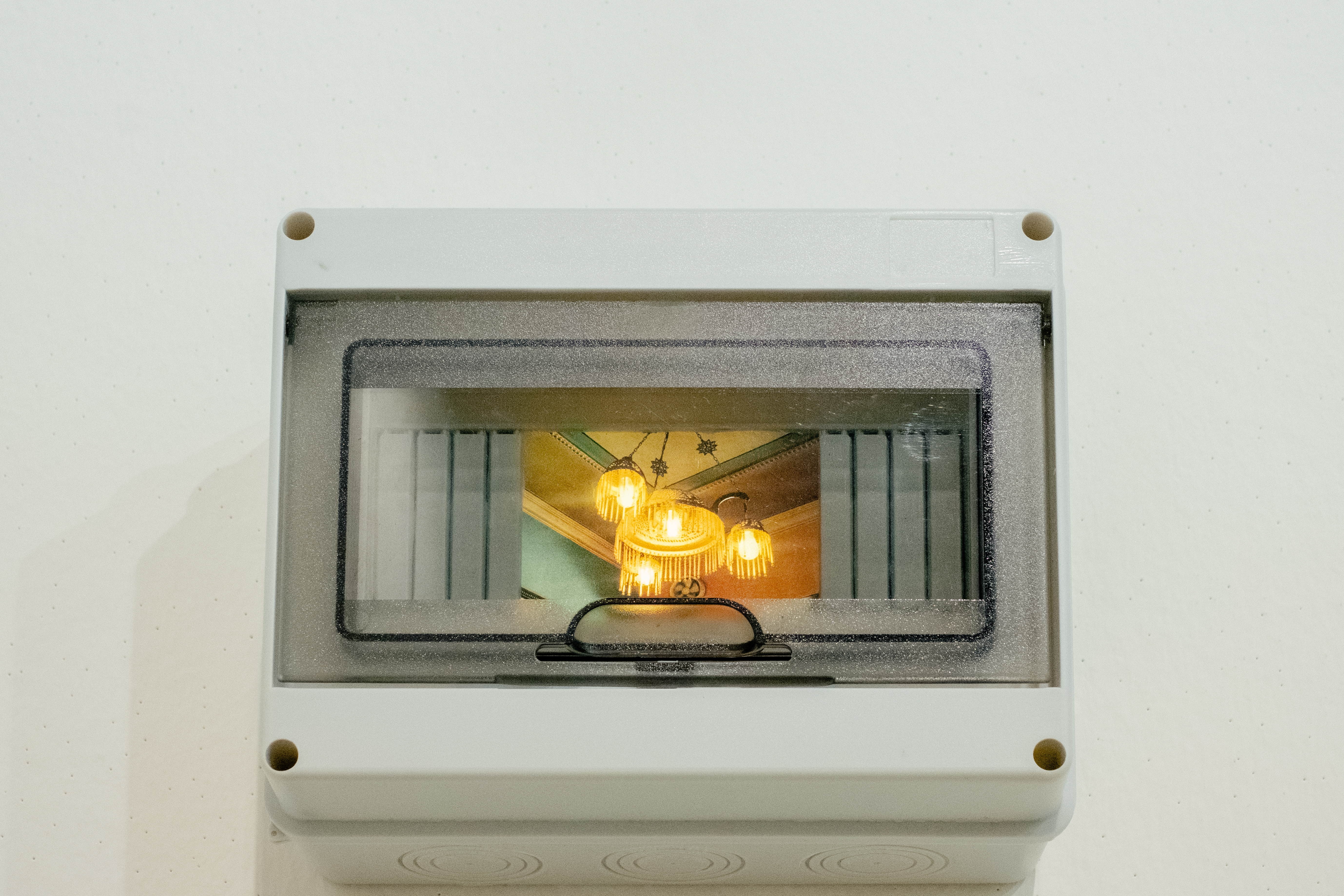

Part of Art Basel 2025's Statements section, which focused on special projects by burgeoning talents, Lebanese artist Joyce Joumaa's Period Sights (2025) installation took visitors inside different domestic and commercial sites of the country. A wall dotted in back-lit breaker boxes, each filled with a different interior completely devoid of people, from a melancholic, empty restaurant to the close-up of a sculptural chandelier and an unused kitchen sink, the presentation, which won her the 2025 Baloise Art Prize at the fair, strived to raise awareness of the everyday implications of the ongoing, war-induced infrastructural collapse of the artist's homeland. It did so by matching each of the installed images with "timers set according to the timetables and duration when power is restored in each of the locations". What that meant for the audience is that the showcase never looked exactly the same, but continually changed throughout Art Basel 2025. The warm light that brought each capsule environment to life at specific times was never, in fact, switched on in all of them simultaneously, but took visitors by surprise, prompting them to engage with and reflect on the unpredictability currently keeping Lebanese people's lives on hold.
Wei Libo at sans titre
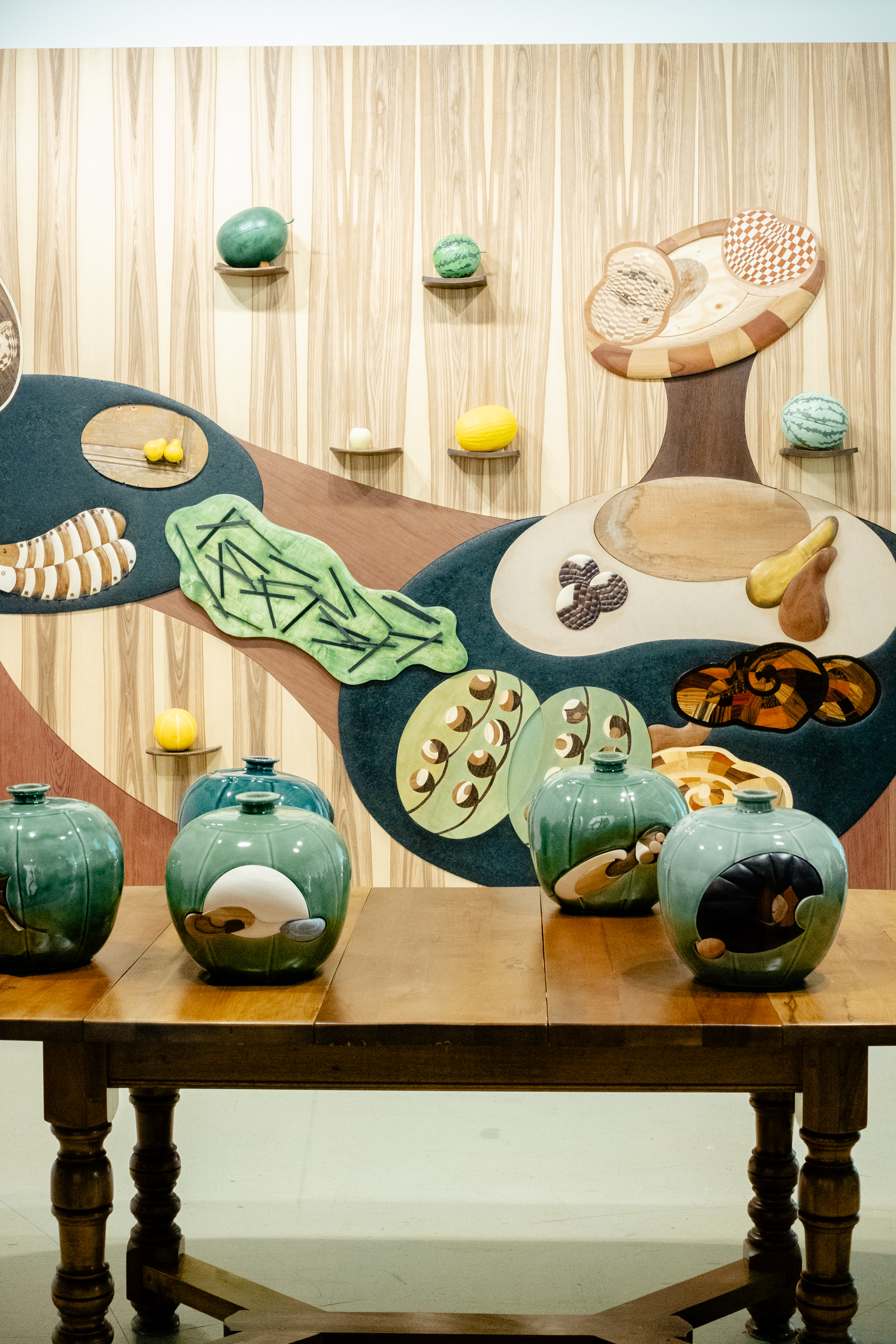
A reference to the melon-shaped ceramics of China's Song Dynasty (10th-12th century CE), among the very first objects the country mass-produced, Wei Libo's presentation traced the continuum between rural life and uncontroled industrialization, showing what the former values and what the latter leaves behind.
Represented by gallery sans titre, Chinese-born, Paris-based artist Wei Libo's solo presentation in the Statements section of Art Basel 2025 was almost impossible to miss. Taking the form of a larger-than-life domestic environment, the show caught my eye for the unexpected contrast of traditional wooden marquetry and whimsical, cartoony ceramics that defined its atmosphere. Comprising a vintage, oval table decorated with plump, sheeny vessels, and an expansive wooden wall interspersed with three-dimensional fruit sculptures, the booth represented the encounter between Libo's rural Chinese roots, the country's storied craftsmanship, and his personal reckoning with television pop culture and industrialization. Rather than attracting the viewer's attention with striking visual effects, Libo's production, which centers furniture and home-like, cocooning dimensions to address his emotional connection to China, turns antiques' quietly beautiful canon on its head to give way to imagination. At Art Basel 2025, what initially looked like a retro-inspired living room thus revealed itself to the public as a much more mysterious space, where his creaturesque earthenware experimentation simultaneously hinted at the melon-shaped ceramics of the Song Dynasty and the heroes of the manga he used to watch as a child. Playful and uncanny, aesthetic and enigmatic, Libo's large-scale contribution to the fair was more than just an installation — it was a glimpse into the artist's biography, values, and mind.
Sara Ouhaddou and M'barek Bouhchichi at Selma Feriani
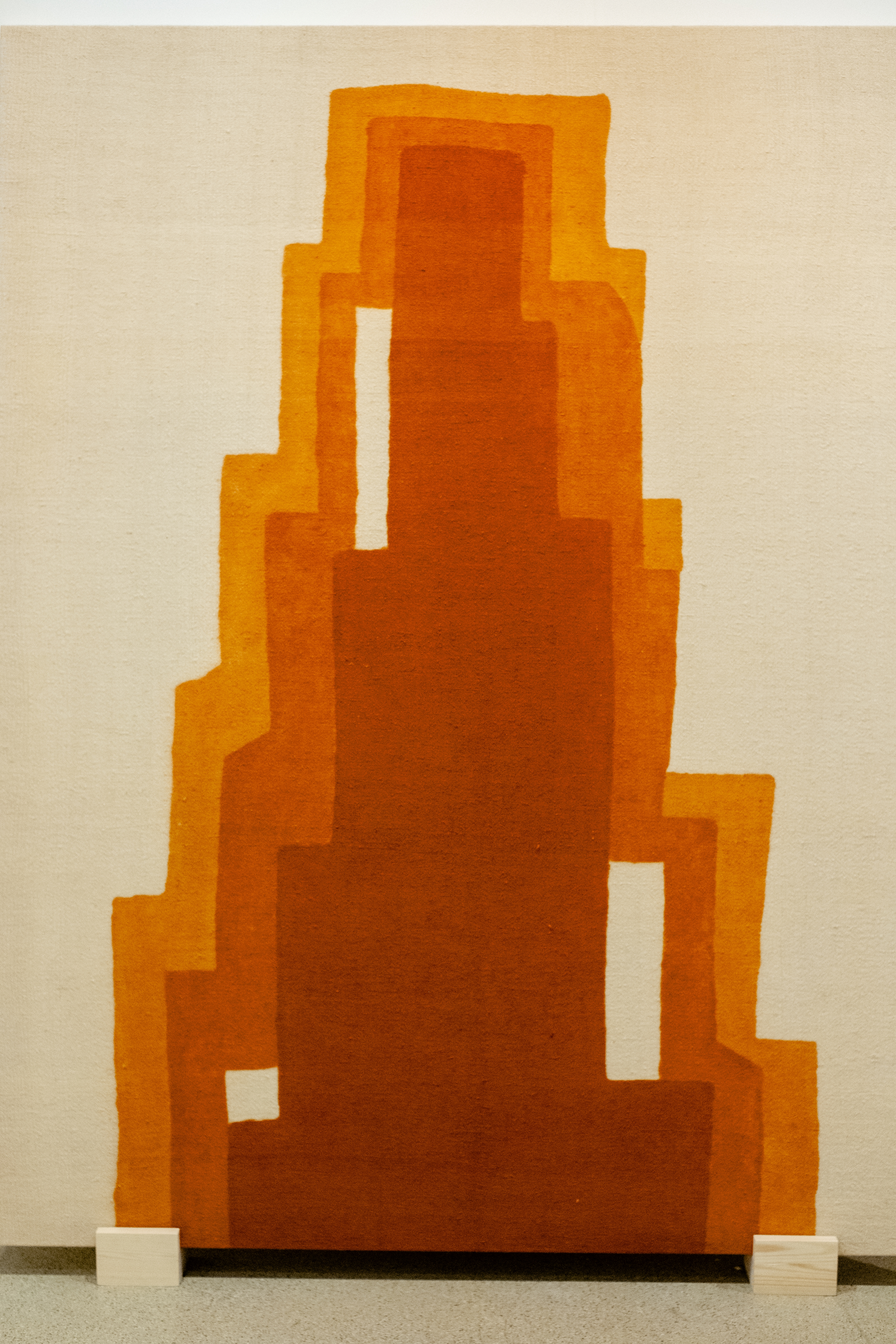
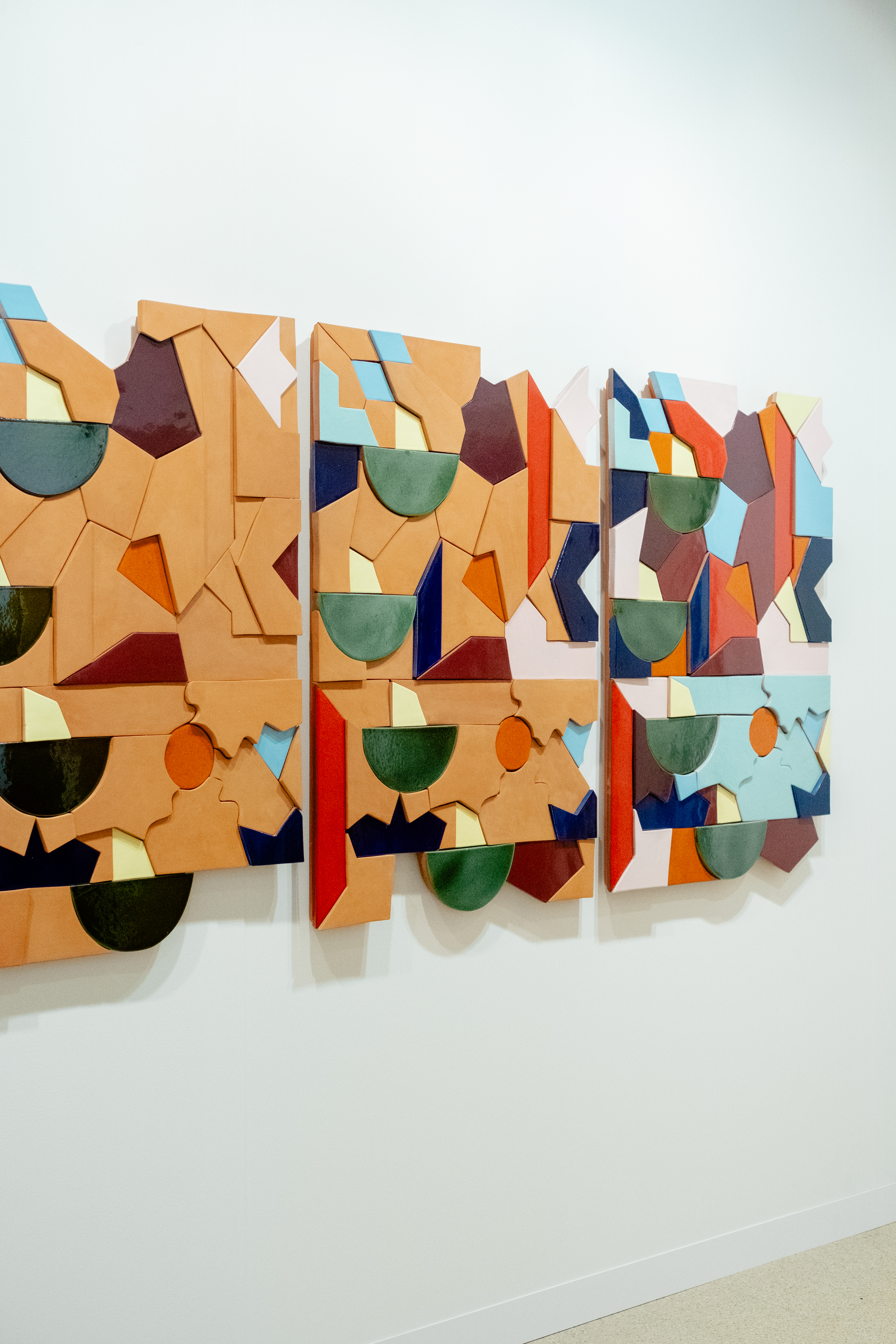
London and Sidi Bou Saïd-based gallery Selma Feriani used its participation in the Premiere section of Art Basel 2025 to spotlight the work of Nadia Ayari, Sara Ouhaddou, and M'barek Bouhchichi, three North African artists whose layered production reinterprets the region's storied iconography, craftsmanship, and symbolism through a compelling contemporary lens. Among them, the creations of the latter two were the ones I resonated with most. A series of wool fabric panels decorated with abstract, towering silhouettes in rich earthy hues, Bouhchichi's Terra project seeks to revive the connection between the artisanal tradition of southeastern Morocco, his native country, and northeastern Mali. Echoing the look of ancient architectural buildings, each of these textile canvases, developed in collaboration with female crafters dedicated to preserving ancestral techniques, acts as a bridge between the desert landscape, the mountains, and the timeless cityscapes of both regions. Relying on abstraction to capture the vibrancy and complex stratification of histories that distinguish this area, the artist's woven paintings look to the home as well as nature as vessels for the dissemination — and preservation of — knowledge and culture.
Something similar occurs in Sara Ouhaddou's production, more specifically in Lune, Oh Lune (2025) and Mon alphabet de terre (2025), the two clay-based explorations she brought to Selma Feriani's booth at Art Basel 2025. Drawing from her Moroccan and Amazigh (Berber) heritage, the artist collaborates with communities of craftspeople from her native region to amplify and protect vernacular artistry from the passage of time. Standing out for their mesmerizing, puzzle-like surfaces, the artist's creations look, at once, as decontextualized fragments of a stunningly ornate building and aerial views of Morocco's textural landscapes. Despite their deeply tactile essence, though, these artworks are Ouhaddou's attempt at making something incredibly fleeting, immaterial, and volatile — Amazigh, her natal language, which exclusively exists in oral form — tangible. Through her collaborative approach to making, she allows artisans to directly contribute to visualizing her personal story while simultaneously creating a blank slate onto which their understanding of Moroccan mythology, their preoccupations, creative spark, and needs are projected in turn. The result is an eye-catching abstract alphabet that not only voices the artist's own vision, but speaks of the country's past, present, and future as a whole.
Missed Art Basel 2025 but keen to keep up to date on the must-see art and design exhibitions in London? Luckily for you, we've rounded up all the standout cultural appointments of the season, from long-awaited solo presentations to walk-through creative endeavors and more.
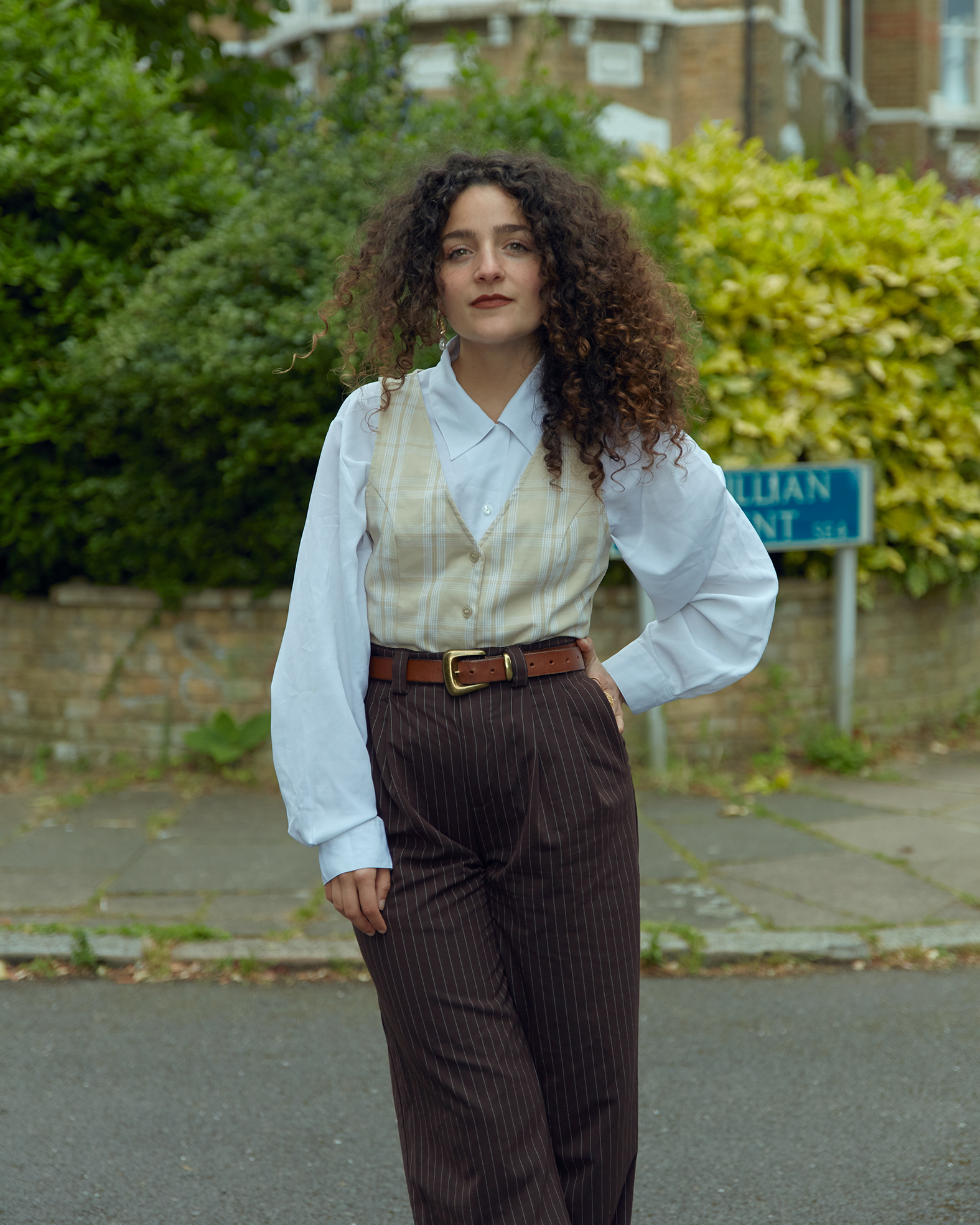
Gilda Bruno is Livingetc's Lifestyle Editor. Before joining the team, she worked as an Editorial Assistant on the print edition of AnOther Magazine and as a freelance Sub-Editor on the Life & Arts desk of the Financial Times. Between 2020 and today, Gilda's arts and culture writing has appeared in a number of books and publications including Apartamento’s Liguria: Recipes & Wanderings Along the Italian Riviera, Sam Wright’s debut monograph The City of the Sun, The British Journal of Photography, DAZED, Document Journal, Elephant, The Face, Family Style, Foam, Il Giornale dell’Arte, HUCK, Hunger, i-D, PAPER, Re-Edition, VICE, Vogue Italia, and WePresent.